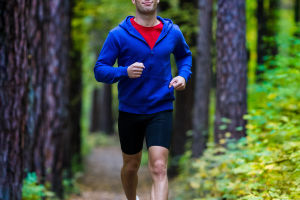Lykkers, as the weather warms up and we shed our heavy winter clothing, many of us are thinking about losing those extra pounds. But let's face it, dieting or spending endless hours at the gym can be tough.
So, how do we shed lipids effectively without it feeling like a chore? Experts say cycling is a fantastic way to do just that, especially if you're living in a city full of shared bikes.
Cycling to work can not only help reduce belly lipids but also boost your insulin sensitivity, improve heart and lung function, and it works just as well as specialized exercises!
Cycling: The Ultimate Golden Aerobic Exercise
Cycling is known as a "golden aerobic exercise" for a reason! It's a full-body workout that can improve your cardiovascular health and lift your mood. But the benefits don't stop there.
1. Reduced Risk of Early Death
Studies have shown that people who cycle to work have a 40% lower risk of dying prematurely compared to those who commute by car or public transportation. That's a huge difference, just by switching up your commute!
2. Improved Heart and Lung Health
Cycling is one of the best ways to improve cardiovascular health. It works out your internal organs, especially your heart and lungs. When cycling, your legs get a lot of blood flow, and during intense cycling, your heart rate can jump to two to three times its normal rate. Over time, cycling can strengthen your heart muscle, improve blood vessel elasticity, and increase your lung capacity. Your respiratory system will be in better shape too!
3. Toned Lower Body Muscles
Compared to activities like jogging, cycling is gentler on your joints while still effectively toning your legs. Research shows that cycling not only strengthens the muscles and joints in the lower body, but it also engages your torso and upper limbs.
4. Reduced Heart Disease Risk
Cycling boosts blood circulation to peripheral areas and promotes the growth of microvascular tissue, which contributes to better heart health. People who cycle regularly have a 50% lower risk of heart disease.
5. Boosted Happiness
Cycling isn't just good for your physical health – it's also great for your mental well-being. Studies show that people who cycle have better moods, stronger stress tolerance, and more energy compared to those who use other forms of transport. Cycling helps you feel more confident, and it's a natural way to increase happiness.
6. Better Sleep
Cycling can help regulate your autonomic nervous system, which leads to better sleep quality. However, don't ride right before bed—give yourself at least two hours between cycling and sleep to ensure a good night's rest.
How to Cycle Properly for Maximum Benefits
While cycling can be extremely beneficial, doing it the right way is crucial to avoid unnecessary injuries. Here are some expert tips on how to ride effectively, shared by Zongliang, a rehabilitation expert at Zhengzhou Ji Hua Orthopedic Hospital.
1. Correct Posture
When cycling, make sure your hips are high and your body leans forward. This posture reduces wind resistance and boosts your speed. If you're new to cycling, start with an easy pace and gradually improve.
2. Seat Height
When sitting on the bike seat, make sure the cranks and the bike frame are aligned. Your legs should be just straight enough when your heels are on the pedals. This helps avoid excessive bending of the knees and promotes proper force during cycling.
3. Foot Position
When cycling, make sure your toes are placed correctly on the pedals. The ball of your foot should be positioned on the pedal axle, which ensures smooth pedaling.
4. Knee Alignment
When the cranks are horizontal and your foot is on the pedal, your knee should align with the pedal axle, ensuring a natural movement that reduces strain.
5. Heart Rate Target
While there's no one-size-fits-all for cycling intensity, you can use your heart rate as a guide. Subtract your age from 220 to determine your maximum heart rate. For most cyclists, aiming for 60% of your maximum heart rate is sufficient for a good workout. You can gradually increase this target as you get fitter.
6. Frequency and Duration
The frequency and duration of cycling depend on your fitness level. Generally, cycling two to three times a week is sufficient, or you can dedicate longer sessions on the weekend. Even cycling to and from work counts as exercise!
7. Warm-Up and Cool-Down
Before embarking on a long cycling session, don't skip the warm-up. Start with a gentle ride to prepare your body and avoid injury. After cycling, it's important to cool down by riding at a slow pace for 20 minutes, followed by stretching to relieve any muscle tension.
Conclusion: Start Cycling Today!
So, Lykkers, now that you know all the amazing benefits of cycling, why not give it a try? Whether it's a short ride to the office or a weekend cycling trip, it's a fun, easy, and effective way to get fit, stay healthy, and improve your mental well-being. Start pedaling today and see the changes for yourself!
Cycling - The Key to a Healthier Life |Amazing Health Benefits Of Cycling For You
Video by Med Today


